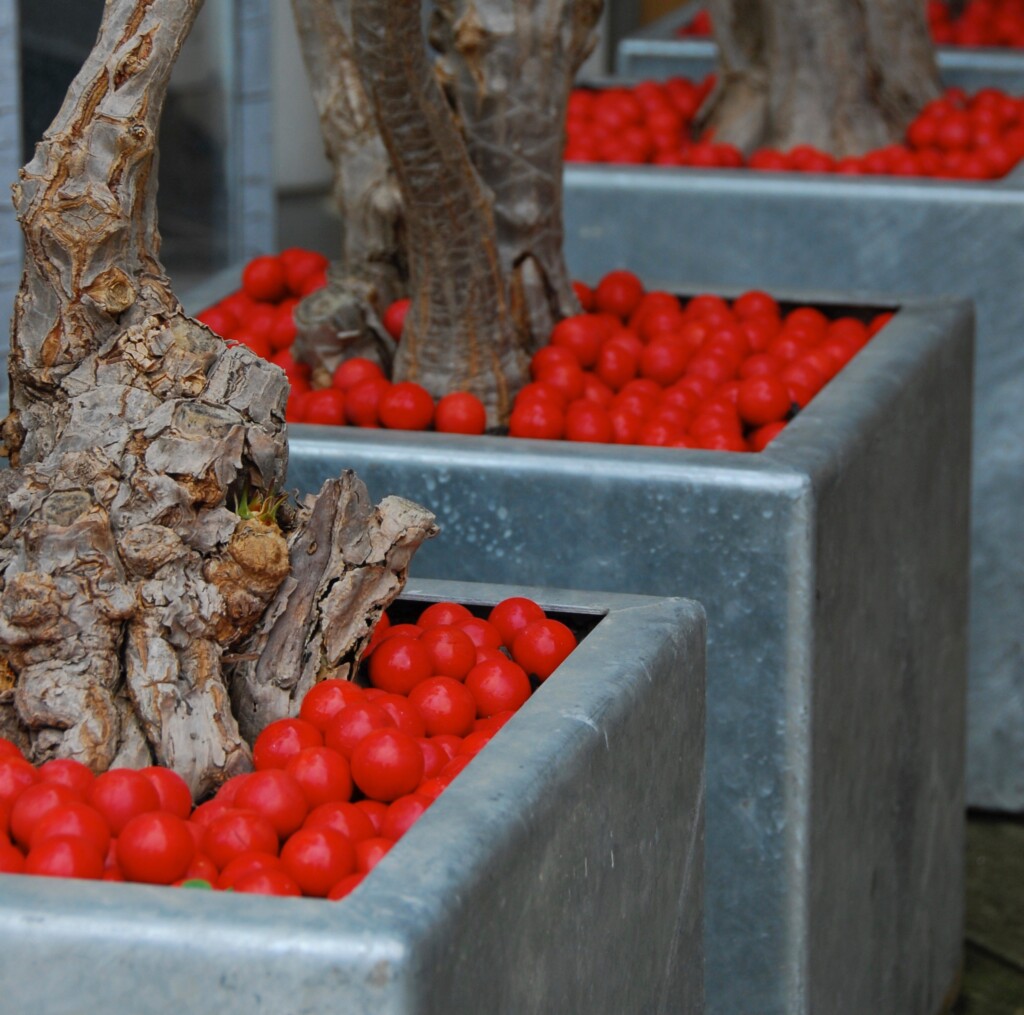When I asked an artist friend why he put a dash of orange paint in a particular spot - he replied, "Because it is unexpected". He then proceeded to explain how the unexpected can enliven a painting and stop it from being boring and predictable (don't get me wrong - there was orange elsewhere in the painting so it "read" as a whole). So I am curious as to how other gardeners have used the element of surprise/unexpectedness in their own garden or have observed it in the gardens of others.
The Unexpected as a Design Element

Discussion
Leave a Comment
You must be logged in to post a comment.
Hi Irene, great question. I remember a long discussion with the now internationally celebrated garden designer Bernard Trainor when we were working together as lads. At some point we came to the conclusion that one of the things we loved best in design was to set up a strong pattern, and then, just here and there, to break it. It’s since become a habit for me.
I’m also obsessed with achieving unity, but have come to understand that unity to be pushed to the point of monotony. Every now and again you need to break it up with some little surprise element. I’ll be interested to see what others contribute
I am a big fan of using an element of surprise or unexpectedness in the garden! I blatantly copied Stephen Ryan’s Miscanthus giganteus Duluxii rubra effort in his garden. Except mine is Britpaintii rubra. Stops garden visitors in their tracks!! In case you don’t know: strip all the dead leaves from your clump in June. Spray the bare stems with whatever colour you fancy! Enjoy the fresh green leaves contrasting with your chosen colour in spring. How easy is that!
I believe the surprise element could be compared with sculpture. Fabulous and uplifting if it is a nice piece in the right place but ruinous if you get it wrong. It takes real talent to try something very bold but if confidence is lacking something less ambitious such as a plant from a different theme will still catch the eye and stimulate curiosity.
That sounds like a lot of fun Melanie – I am quite partial to strong colours having recently moved some yellow chrysanthemums next to purple flowering salvias – it really does intensify the colours. But it is a balancing act – the element has to somehow relate to its surrounds or it can look out of place as Kirsten has pointed out. Something like Fiona Brockhoff’s “thong pyramid” makes sense in a coastal garden but it would seem weird in the highlands of Tasmania. At the same time I guess the aim of the unexpected can be to provoke thought not just make a happy/pleasing vignette. The creation of an element of surprise is a deliberate, intentional act but I wonder if it is a response to an innate understanding or feeling that something is missing – that something “more” is needed to complete the picture. I think of Monet’s decision to paint his japanese bridge turquoise – an unexpected choice when tradition would dictate that it be painted red – but it works with the colours of the water lily foliage – and at the same time fulfils your desire for unity Michael. Mind you if we all understood colour theory like Monet our gardens would be a symphony of colour ! (Apologies -some of you may have reached this point !) So I guess there is room for subtle surprises as well as bolder ones – whatever the space needs.
I agree with you, Irene. It’s important that the ‘surprise’ must be somehow relevant. It’s kind of like the punch-line of a joke – it only really works when it both surprises you in its sudden change of direction from where you thought it might be going, but is ‘believable’ in the context of the set up.